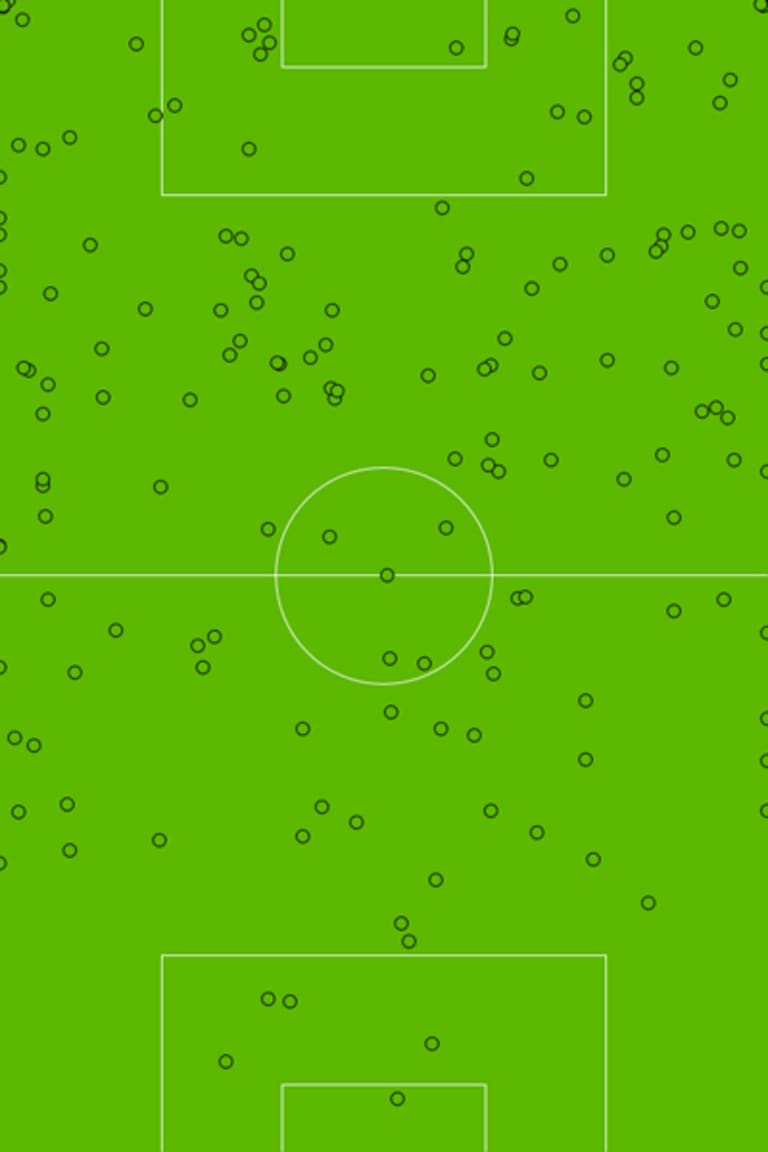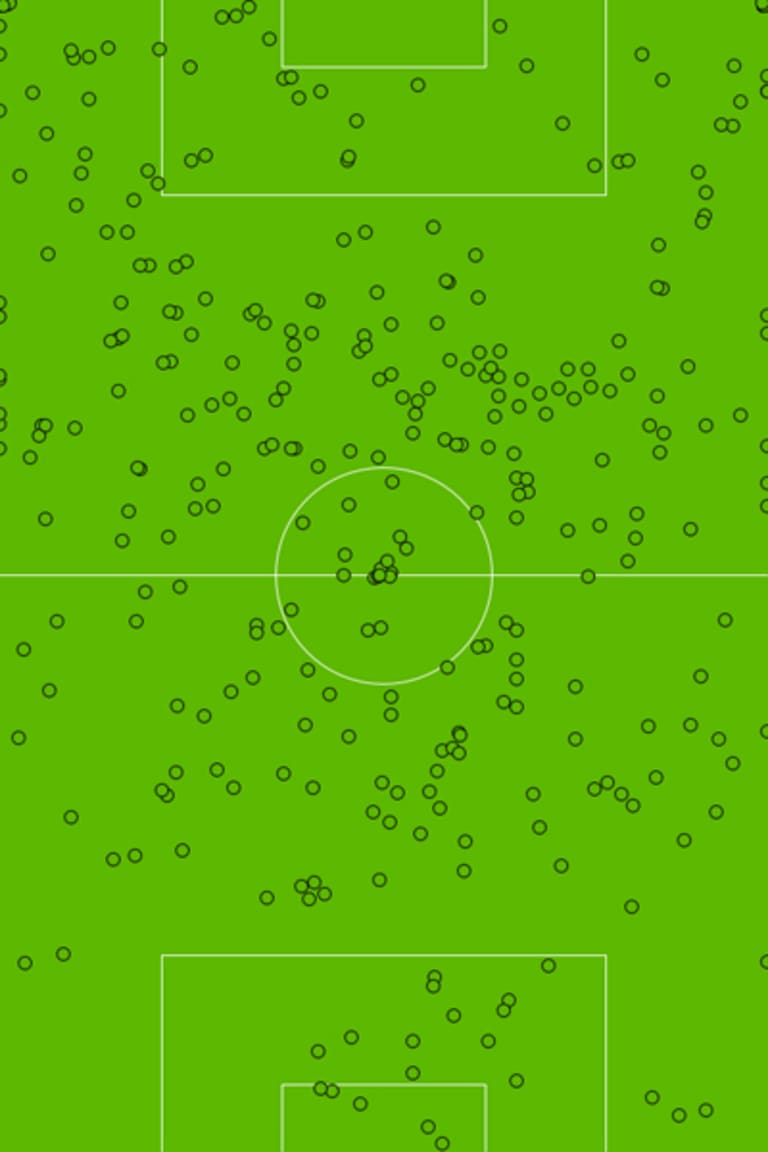I'm not going to say that building out of the back is a bad thing. Some of the most memorable goals in league – and world – history have come from long sequences that started with a simple pass from the central defense.
But it may not be the most efficient thing. The vast majority – 71 percent – of goalscoring possessions have originated in the offensive half of the field this season. Only 13 percent have originated in the defensive third.
Now, it's important to explain the exact definition that I am using for the beginning of a possession, since this seems to be a sticking point in the analytics community at the moment. I am personally defining a possession as sequence of at least two attempted passes, and the starting point of the possession is the origin of the initial pass.
I will be the first to admit that this isn't a perfect definition. And if you don't think this is a good enough approximation, fine – don't call it a possession. The origin of a sequence of at least two passes resulting in a goal is still in the attacking third 71 percent of the time, and that's a staggering number.
With the help of the MLS Chalkboards powered by Opta, here are the starting locations of all of goal scoring possessions in MLS this season. Notice: Teams are attacking from the bottom toward the top.

And, if we look at the same graph for MLS 2011, we have very similar findings: 66 percent of all goals originated in the attacking half.

Why is this? There are a few obvious answers. When you gain possession closer to the goal, there’s less distance between the ball and the goal. The less distance between the ball and the goal, the easier it will be to score. Common sense, really.
Also, if you're gaining possession in the attacking half, it's very likely to be the result of a mistake by the defending team. If the defending team has very recently made a mistake in their own half, it is probably easier to convert this event into a higher-percentage opportunity.
But, does 71 percent mean that teams should boot the ball into the opposing half and hope to win the ball back there? Probably not.
Possession soccer is not inefficient, just misunderstood. I would expect that Barcelona, the de facto masters of possession soccer, have very similar statistics because they are equally masterful at winning the ball back after being dispossessed. Their high pressure defense causes dangerously positioned turnovers – and Barça have proven to be particularly efficient at converting these opportunities.
Even moreso for their La Liga rivals Athletic Bilbao, who are helmed by Marcelo Bielsa. The Argentine skipper is a guru of the high press – Pep Guardiola made something of a pilgrimmage to Bielsa's country estate back in 2007 – and he was able to coax a relatively unheralded Athletic side to the finals of both the Europa League and the Copa del Rey this past season based largely upon their ability to win the ball back quickly, then play vertically to create (and finish) scoring opportunities.
So at first glance, the percentage increase of goalscoring possessions originating in the attacking half in MLS from 2011 to 2012 seems to suggest that fewer teams are relying on possession soccer. Instead, I'd argue that it's evidence that high-pressure high-line modern systems are finding their way across the pond.
It’s the Church of Bielsa, MLS-style. And that's exciting.
Devin Pleuler is a computer science graduate from Wentworth Institute of Technology in Boston, where he played on the men's varsity team as a goalkeeper. He's certified as a coach through both the USSF and NSCAA, and writes the Central Winger analytics column for MLSsoccer.com.











